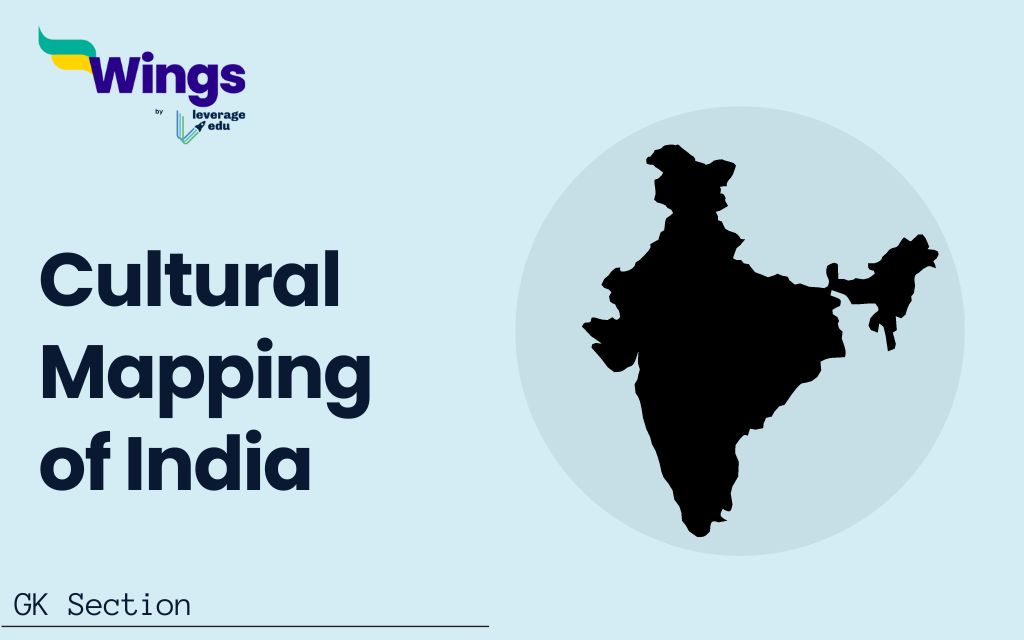Have you ever heard about cultural mapping? What does that mean for you? Cultural mapping is a systematic document of the cultural practices of a group or nation. India is a diverse country with people from many cultures and religious backgrounds. Cultural mapping provides an opportunity to understand, analyze, preserve, and promote India’s cultural legacy. In this section, we shall discuss the concept of cultural mapping in India. This blog will help students understand this subject of national importance which may appear in the competitive examinations including UPSC, SSC, and EPFO. Continue reading to enhance your knowledge about such topics.
Contents
Cultural Mapping And Its Importance
Cultural mapping is the systematic documentation of a community’s cultural resources, traditions, and rituals. India is home to various cultures, each with its own history. Cultural mapping in India has its importance, which is discussed below.
- Promotion of Cultural Awareness: Cultural mapping promotes cultural awareness by documenting cultural resources and providing a glimpse into India’s rich cultural heritage.
- Preservation of Cultural Heritage: This method also helps to preserve and promote cultural practices such as traditional art, folk music, and dance. These cultural heritages need protection since they are at risk of extinction in modern times.
- Supporting Cultural Policies: Cultural mapping gives data to policymakers, helping them to plan for cultural preservation accordingly.
- Economic Development: Cultural mapping can help develop cultural industries, which boosts tourism and the country’s economy.
Also Read: What is National Integration in India?
Methodologies in Cultural Mapping
Cultural mapping is an important process of collecting cultural data. There are various ways through which cultural mapping can be done. A few of the methodologies of cultural mapping are given below.
- Geographic Information System (GIS): GIS technology collects cultural information through visual representation. This method is useful for checking the distribution of cultural sites such as temples and monuments throughout the country.
- Participatory Mapping: It is a method that involves local communities in the mapping process. This method documents the perspective of the individuals of that culture who live in and contribute to that culture.
- Ethnographic Survey: Researchers do fieldwork to document cultural practices, traditions, and knowledge systems by interacting with local communities and observing them.
- Archival research: This method involves analysing historical records, manuscripts, and old maps to trace the cultural activities and their geographical distribution throughout time.
Cultural Regions of India
There are several regions of India which hold cultural significance. We have listed below the several cultural regions with have their own unique identities.
- Northern India: This region is known for its rich kingdoms, religious diversity and classical arts. Important religions such as Hinduism, Buddhism, Jainism, and Sikhism developed in this region. This region is well-known for its famous sites like the Taj Mahal and the Golden Temple, as well as traditional practices such as Hindustani music and Kathak dance.
- Eastern and Northeastern India: These two regions are renowned for their rich cultural legacy. Bengal and the northeastern states have vibrant religious and tribal cultures. Festivals such as Bengal’s Durga Puja and Assam’s Bihu represent the cultural identity of those regions.
- Southern India: The southern part of India is known for its Dravidian heritage. Dance forms such as Bharatnatyam and Kuchipudi, Carnatic music and temple architecture are all deeply rooted in the Southern tradition. The linguistic diversity of Tamil, Telugu, Kannada and Malayalam plays an important role.
- Western India: Maharashtra, Gujarat, and Rajasthan are the westernmost states of India and have important cultural values. This region is known for its folk traditions, classical music from the Jaipur Gharana and Rajastani fabrics and traditions.
- Central India: States including Madhya Pradesh and Chhattisgarh, are known for their tribal cultures, ancient temples and ruins of earlier empires.
Also Read: What is the Full Form of MHRD?
Cultural Mapping Initiatives in India
The government has taken various measures and initiatives to conduct cultural mapping in India. Some of the initiatives are mentioned below.
- INTACH (Indian National Trust for Art and Cultural Heritage): INTACH has been actively involved in documenting heritage sites, traditional crafts and oral traditions throughout India.
- The National Mission on Cultural Mapping and Roadmap (NMCM): This initiative was launched by the Ministry of Culture and aims to create an exact cultural map of India. They document the cultural and current arts of a particular location.
- Sahapedia: Sahapedia is an online resource for documenting and sharing Indian cultural history. They conduct important research and recording of cultural practices.
- UNESCO Cultural Mapping Projects: UNESCO funded a number of cultural mapping projects in India that focus on preserving and promoting traditional practices.
Challenges in Cultural Mapping of India
Cultural mapping presents various challenges, making it difficult for the government. Despite its importance, this process faces some of the following challenges:
- Diversity and Complexity: The richness of India’s culture makes mapping quite challenging. Documenting and analysing every cultural practice in such a diverse country requires a huge amount of resources.
- Lack of Resources: Many cultural mapping projects struggle due to a lack of finance, trained workers, and infrastructure.
- Political and Social Factors: Social and political factors may affect cultural mapping which leads to the exclusion of underprivileged communities.
- Rapid urbanisation and modernisation: This process threatens traditional cultural practices, which may be lost in the process.
Future of Cultural Mapping in India
Even after all the challenges, it has a great importance to preserve the ancient past. Cultural mapping has a potential future if done in a correct manner.
- Community Participation: Active participation from local communities ensures that cultural mapping is authentic and accurately represents the culture.
- Education Purpose: Including cultural mapping in the school curriculum can help the younger generation understand India’s diversity of cultures.
- International Collaboration: Working with international organisations can help provide new resources and approaches to improve cultural mapping practices.
Cultural mapping helps to preserve and promote cultural heritage. Cultural mapping ensures that the past legacy is passed down to future generations by systematically documenting and analysing it. As India evolves, cultural mapping will become increasingly important in keeping the country’s cultural identity in the face of globalisation and modernisation.
Related Posts
| UPSC Prelims Eligibility Criteria | UPSC Prelims Previous Year Papers |
| Enforcement Directorate (ED) | New Education Policy in India |
| What is the Full Form of UPSC? | What is the Full Form of MEA? |
| What are Mind Map Study Techniques? | UPSC Prelims Exam Pattern |
FAQs
Cultural mapping is a systematic document of the cultural practices, traditions and rituals of a group or nation. It provides an opportunity to understand, analyse, preserve, and promote India’s cultural legacy.
Cultural maps represent various cultural details of the landscapes such as ethnicity or race, castes, religion, languages, etc.
The Ministry of Culture in India conducts the cultural mapping.
This was all about the “Cultural Mapping of India”. For more such informative blogs, check out our UPSC Exams Section and Study Material Section, or you can learn more about us by visiting our Indian exams page.
 One app for all your study abroad needs
One app for all your study abroad needs














